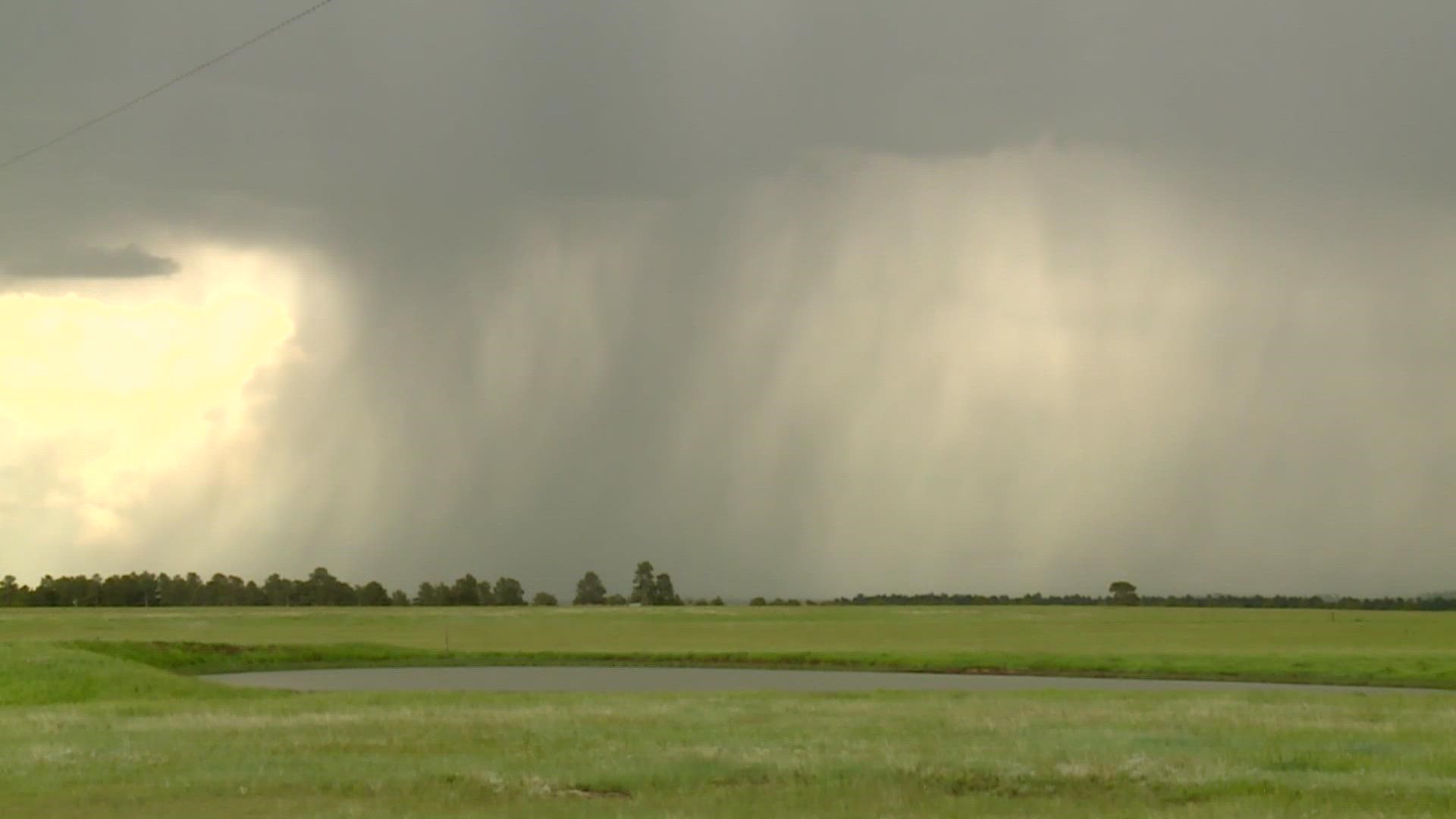FORT COLLINS, Colo. — It has been a big monsoon summer, but snow is still the king in Colorado.
“The amount of water that comes from the snowpack over the winter and into the spring is just a whole lot larger than what we see from the monsoon storms,” said Colorado State Climatologist Russ Schumacher.
He said the monsoon only plays a very small role in filling reservoirs. It’s mostly a matter of the storm size. Thunderstorms can dump 2-4 inches of heavy rain, but they only cover a small area.
“Whereas in a big winter storm we might see 2 to 4 inches of liquid from the snow covering huge areas of the mountains,” said Schumacher.
Let's do some math. A large monsoon thunderstorm might cover about 900 square miles with 2 inches of rain. And maybe there's 20 of those storm cells over the course of 1 day, that's 18,000 square miles that get covered with 2 inches of rain.
Now take an average size winter storm that covers about 200,000 square miles with 2 inches of water. That's 11 times more water with the one winter storm.
And of course, monsoon season only lasts three months, while winter snowpack accumulation lasts six months.
Research published in Nov. 2020 showed that only 10% of the annual streamflow in headwaters of the Colorado River comes from summer rain. Schumacher said that if you extrapolate that out over the entire state it would likely be a little less.
So not only is there far less water in the monsoon, but it falls in the summer when the sunshine is most intense and evaporation is most potent. It’s also the time of year that the most rain gets intercepted by thirsty vegetation.
“It's a bad feedback loop where the atmosphere is demanding more water, the airs demanding more water, the plants need that water, everything is trying to get at that water and there’s not enough of it there," said Schumacher.
Even record-breaking rainfall this summer in parts of the San Juan mountain range is having little impact on the reservoirs below.
The Wolf Creek Summit Snotel station has recorded 12.4 inches of rain this summer so far, which is the most in the 22-year history of the station. And there are still 15 days left in August.
Summer in meteorological record keeping is June 1 through August 31.
Schumacher said that some of that monsoon rain could be stabilizing the reservoirs. Preventing them from draining as low as they might without the rain.
It should be noted that the reservoir gates are still releasing water to users downstream. They are typically not as open during the snowmelt season.
The gauge at Navajo Reservoir, which receives snowmelt from the San Juan mountains, does show a slight monsoon signal in recent charts. It is a small boost, but the reservoir elevation is still quite a bit lower than it was on Aug. 16 the past couple of years.


The monsoon is however playing a big role in reducing short-term drought.
“It puts water back into the soils, helps out the vegetation, and keeps the fire risk low,” said Schumacher.
SUGGESTED VIDEOS: Latest from 9NEWS

